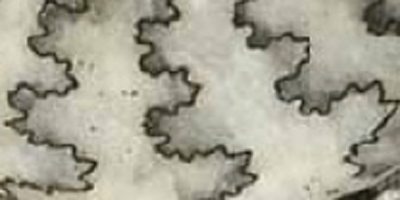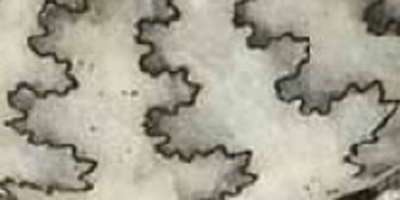Fractal Teeth
Consider the human skull or the shell of an ammonite. Such structures have interfaces, called “suture joints,” with interdigitating “teeth” joined by more compliant interfacial layers. Some suture joints created in nature have hierarchical teeth, that is, arrangements of smaller teeth superimposed on larger teeth. The shell of the ammonite, which has two layers of teeth, is an example of second-order hierarchy. Fractal hierarchical structures have also been used by scientists to design plates and shells. How does the geometry of the interface conspire with the material properties to produce shells that bear and transmit loads, absorb energy, and also provide protection and flexibility for growth and locomotion?
In work published in Physical Review E, Yaning Li and colleagues at the Massachusetts Institute of Technology in Cambridge addressed this question. They constructed analytical and numerical models to investigate the effect of geometry on stiffness, strength, and fracture toughness of such joints. In an earlier paper, they considered only one layer of teeth and constructed models of first-order triangular and rectangular suture joints. In their current paper, they asked how higher-order triangular “teeth” would affect properties of suture joints. Li et al. explored a range of parameters for fractal hierarchical models and found that stiffness and strength were very sensitive functions of the number of hierarchies. Their work indicates that hierarchies can help tailor mechanical properties over a wide range of values for a given volume and weight. These models should be helpful for studies of biological suture joints and their evolution. The analyses and graphs should also prove useful in designing synthetic, flaw-tolerant interfaces and joints. – Margaret Foster





